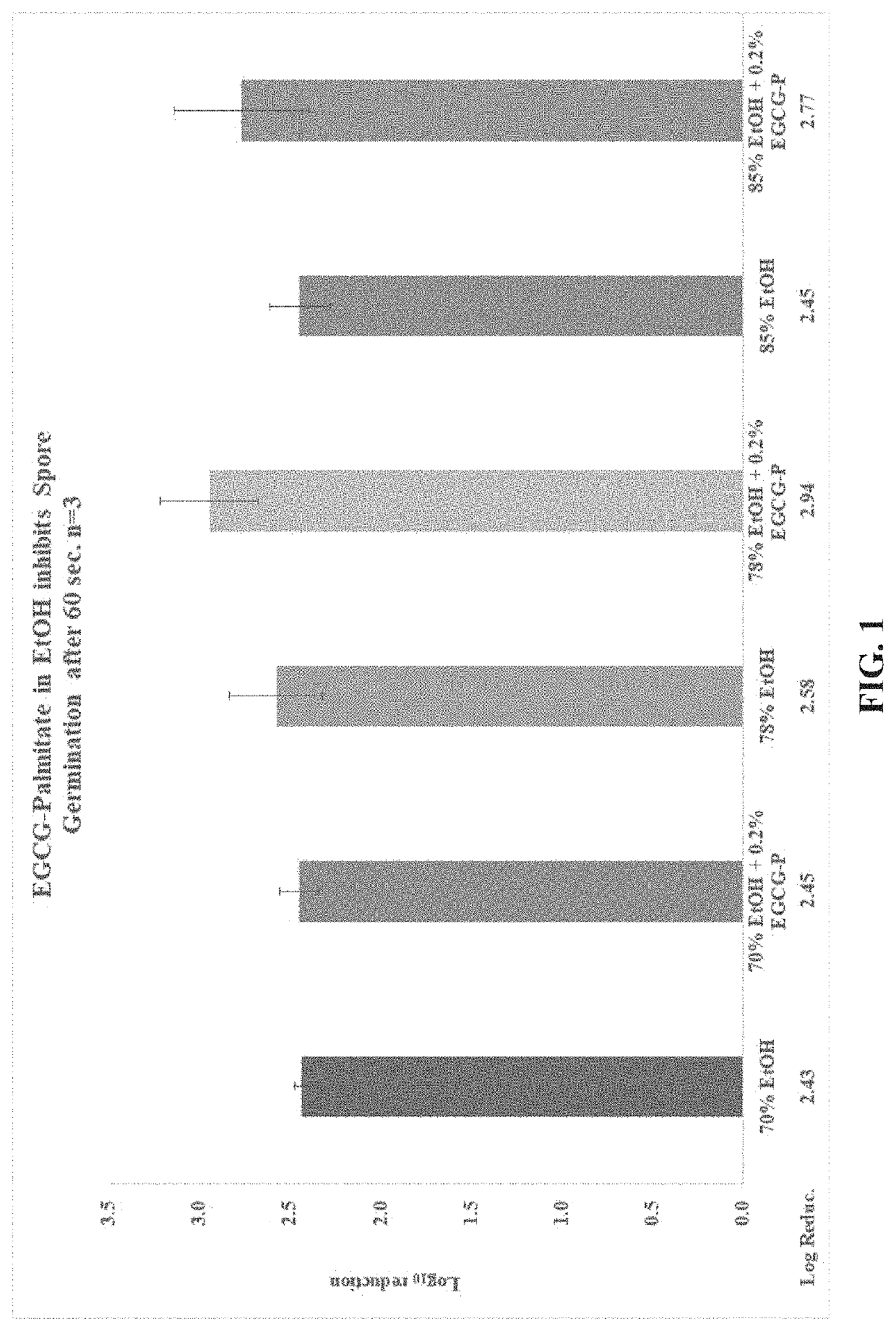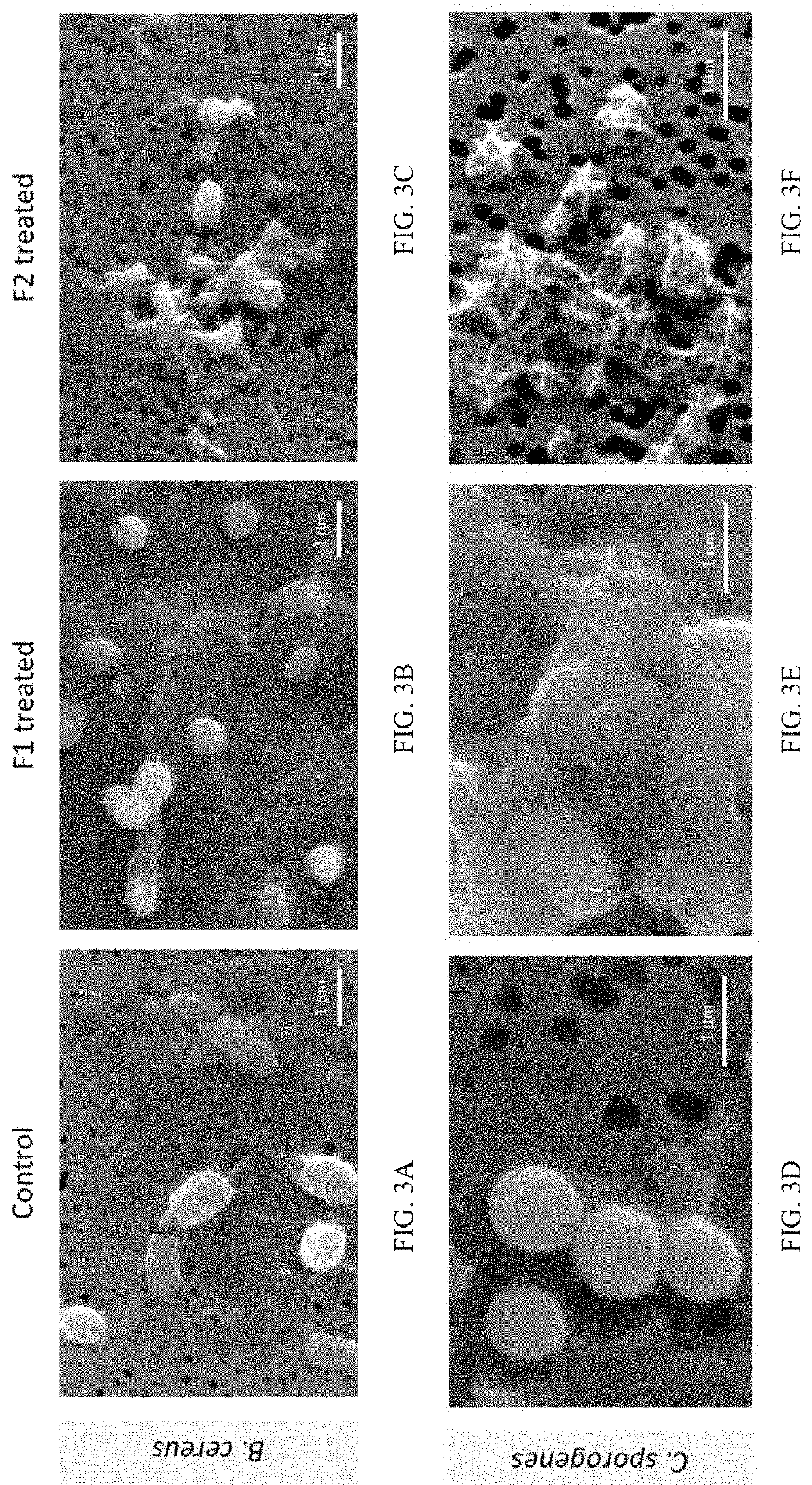Compositions and Methods for Inhibiting Endospores Using Green Tea Polyphenols
a technology of endospores and polyphenols, which is applied in the field of compounding and methods for inhibiting endospores using green tea polyphenols, can solve the problems of reducing the active population of spores, affecting and affecting the survival rate of food, so as to reduce or delay the spoilage of food or food products, and increase the shelf life of food. the effect of shelf li
- Summary
- Abstract
- Description
- Claims
- Application Information
AI Technical Summary
Benefits of technology
Problems solved by technology
Method used
Image
Examples
example 1
EGCG-P, Different Concentrations of Ethanol and EGCG-P / Alcohol Combinations on the Spore Germination
[0239]Materials and Methods
[0240]Spore Enrichment and Purification:
[0241]B. cereus was incubated on modified nutrient agar plates (supplemented with 0.06 g of MgSO4 and 0.25 g of KH2PO4 per liter) at 37° C. for 10 days to enhance endospore formation. After 10 days, Schaeffer Fulton differential staining was conducted to observe the endospore and vegetative cells. The endospores were then purified by centrifugation at room temperature for 10 min at 10,000 rpm twice. The supernatant was discarded and the endospores were suspended in sterile deionized water and vortexed to create a homogenous suspension. The suspension was heated for 20 min at 75° C. to eliminate any remaining vegetative cells and obtain pure endospores. Purified endospores from B. cereus were mixed for 1 min (60 sec) with the formulations #1, 2, 3, 4 or 5 (Table 1, above). After treatment, serial 10× dilutions were made...
example 2
Different Sporicidal Formulations on Spore Germination
[0244]Materials and Methods:
[0245]Spore Enrichment and Purification:
[0246]B. cereus was incubated on modified nutrient agar plates (supplemented with 0.06 g of MgSO4 and 0.25 g of KH2PO4 per liter) at 37° C. for 10 days to enhance spore formation. The spores were then purified by centrifugation at room temperature for 10 min at 10,000 rpm twice. The supernatant was discarded and the spores were suspended in sterile deionized water and vortexed to create a homogenous suspension. The suspension was heated for 20 min at 75° C. to eliminate any remaining vegetative cells and obtain pure spores. Purified spores from B. cereus were mixed for 30 sec with the formulations #1 (F1) and #2 (F2), respectively. After treatment, serial 10× dilutions were made immediately, plated onto nutrient agar plates, and subsequently incubated at 37° C. for 24 h. After incubation, the colony forming unit (CFU) value was counted, the % of inhibition and lo...
PUM
 Login to View More
Login to View More Abstract
Description
Claims
Application Information
 Login to View More
Login to View More - R&D
- Intellectual Property
- Life Sciences
- Materials
- Tech Scout
- Unparalleled Data Quality
- Higher Quality Content
- 60% Fewer Hallucinations
Browse by: Latest US Patents, China's latest patents, Technical Efficacy Thesaurus, Application Domain, Technology Topic, Popular Technical Reports.
© 2025 PatSnap. All rights reserved.Legal|Privacy policy|Modern Slavery Act Transparency Statement|Sitemap|About US| Contact US: help@patsnap.com



